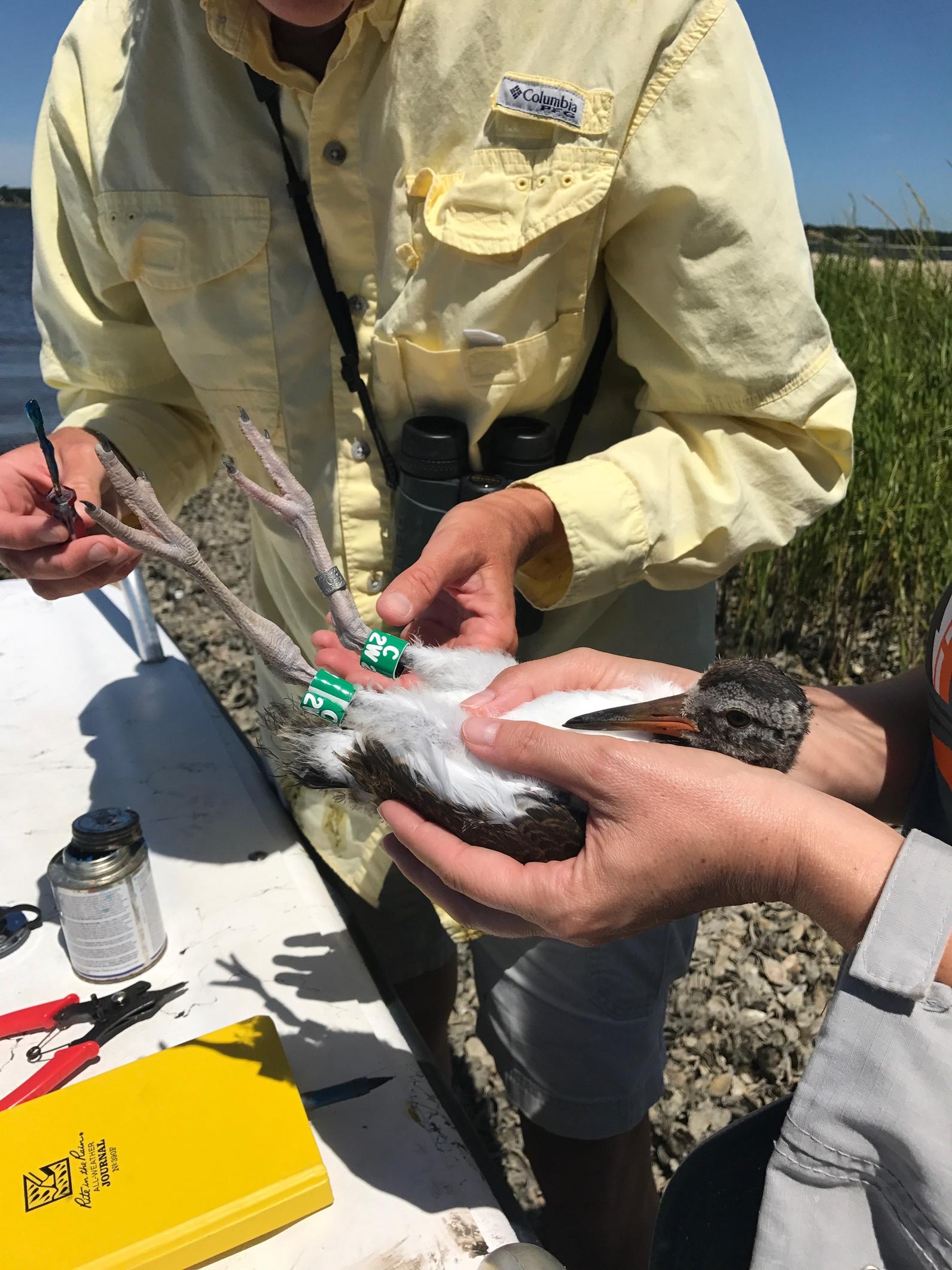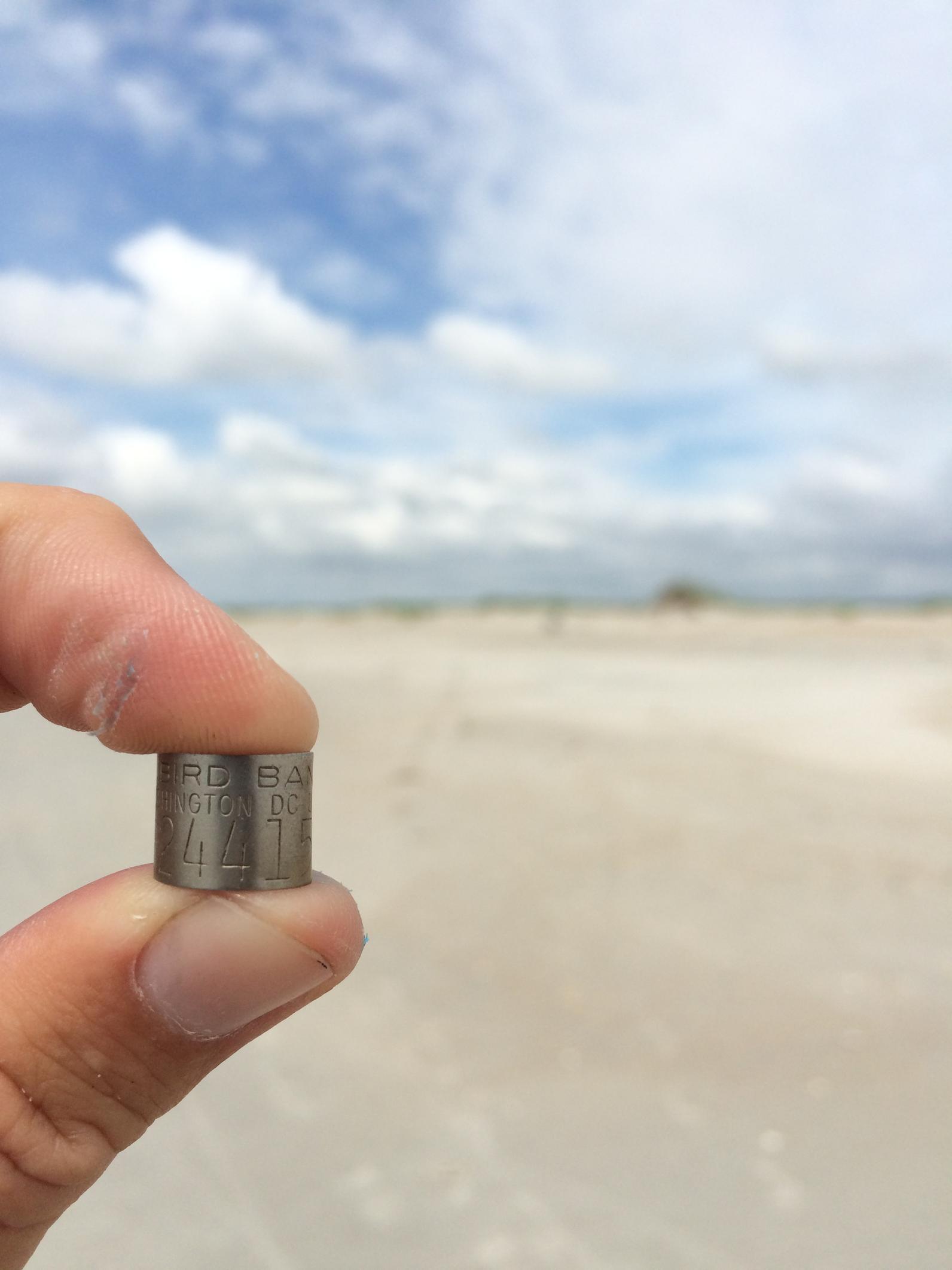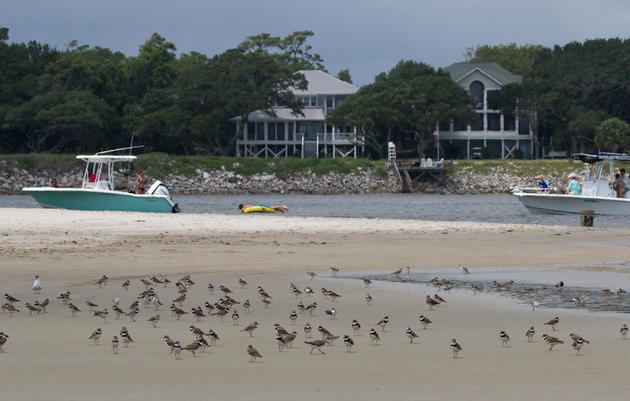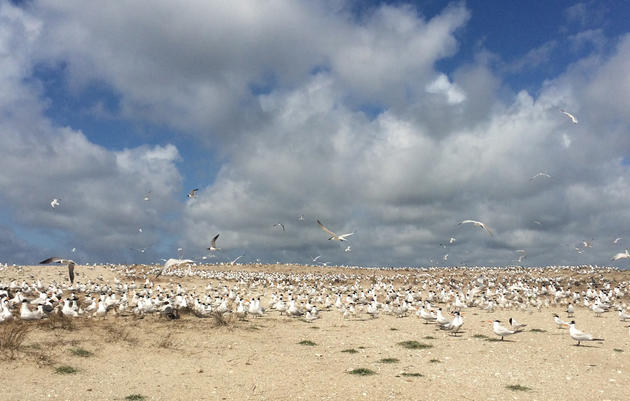American Oystercatchers have long been a bird of interest in North Carolina and throughout the rest of the Atlantic Flyway range.
Why? First, because they are an umbrella species; when they do well on beaches and islands, other nesting species are likely to as well. Second, because they had been in a decline (studies in the early 2000s showed losses of up to 50% in the southeastern portions of the range), which has since been halted thanks to focused management.
To help learn about the demographics and movements of the American Oystercatcher, biologists all along the Atlantic and Gulf Coasts have been banding them since the early 2000s.
Most banded oystercatchers wear brightly colored field-readable bands, which carry a 2- or 3-character code that identifies the individual uniquely and enables re-sighting without recapture. They also carry a metal band with a unique 9-digit number. If you have a spotting scope or a camera with a zoom lens, you can (hopefully) read oystercatcher bands and report them to the American Oystercatcher Band Database, where you can find out about “your” bird’s history!

As part of this banding effort, Audubon North Carolina has banded chicks at our sites since 2010, and adults since 2015.
We’re often asked how we catch them: chicks are banded before they can fly, so usually it’s a matter of finding their hiding place and picking them up. Adults, however, are another matter. Because they are territorial, they can be lured into a trap by placing an oystercatcher decoy nearby and playing territorial calls that mimic an intruder oystercatcher.
This year, we worked around the state to band adults and chicks not only at our managed sites, but at five partner sites as well: Pea Island National Wildlife Refuge, Cape Hatteras National Seashore, New Dump Island (a NCWRC site), Masonboro Island (managed by the NC Coastal Reserve system), and Fort Fisher State Recreation Area.
In all, we banded 38 adults, recaptured four previously-banded adults, and banded 48 chicks. The highlight of the year came when we recaptured an adult on Masonboro Island with only a metal band. When we had the bird in-hand and were able to read the number, we found it was captured as an adult in Georgia in 2001, making it over 17 years old!

This fall, we’re re-sighting banded birds throughout the Cape Fear region and waiting to receive reports from volunteers and citizen ambassadors from North Carolina to Florida of our banded birds as they move south for the winter. Check back later this year to see where some of those oystercatchers have been found: http://amoywg.org/banding-re-sighting/







